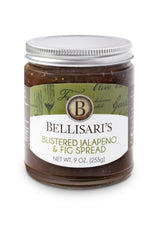These days, the changing leaf colors and a drop in temperature aren’t the only indicators of the arrival of fall. Another sure-fire sign that autumn is imminent are the never-ending ads for pumpkin spice (fill in the blank). (My answer would be EVERYTHING, btw.) Pumpkin spice is definitely not just for lattes anymore. Of course you can find it in the popular Starbucks Pumpkin Spice Latte (PSL), but you can also taste and smell it in grandma's famous pumpkin pie, other recipes like granola, scones, or overnight oats, and even scented, non-food products like candles and soaps. All of this leads me to wonder: when, where, and why did this pumpkin spice craze begin?
“When” is easy to answer. In the past, pumpkin was actually a "last resort" food. It grew in abundance and was often used as a substitute for wheat or yeast. "Pumpkin eater" was actually used as an insult! However, towards the mid-19th century, there was a newfound longing for the past, and pumpkins began to be romanticized in poetry and new recipes.
In the U.S., pumpkin spice has been wildly popular during the last decade, and ever since a certain pumpkin-pie-spice flavored espresso drink hit the scene, food and beverage companies have been trying to copy its success, which means analyzing what made it so popular to begin with. Who could have predicted that such a quirky flavor would do so well? Sure, pumpkin pie is good, but it never even breaks the top five in polls of America’s favorite desserts. It’s somewhat niche, too, with more than 95 percent of the spice blend’s sales occurring between August and November, according to McCormick, the company that originated Pumpkin Pie Spice—a blend of cinnamon, ginger, nutmeg and allspice—in 1934 as a shortcut for flavoring the traditional harvest dessert.
In addition, here in the United States during the fall/autumn months, we celebrate a couple holidays. On October 31 we celebrate Halloween and most people buy pumpkins and put them outside their house. So pumpkins are very visible. We also celebrate Thanksgiving, an American holiday when one of the iconic foods eaten is pumpkin pie, which is basically the flavor that "pumpkin spice" is trying to emulate. So with the visibility of pumpkins around Halloween, and the tradition of eating pumpkin spiced things at Thanksgiving, pumpkin spice is now a sign of the changing seasons.
“Where” is a little trickier to answer because beginning with the myth of the first Thanksgiving, Americans have used the pumpkin to fulfill their desire to maintain connections to nature and to the family farm of lore, and, ironically, have revitalized small farms and rural communities in the process. The first recorded pumpkin pies were made in the early American colonies by cutting the top off, scooping out the insides, and mixing in honey, milk, and spices.
While most people around the world eat pumpkin throughout the year, North Americans reserve it for holiday pies and other desserts that celebrate the harvest season and the rural past. All over this country, many Americans drive for miles each autumn to buy a vegetable (fruit?) that they are unlikely to eat. We decorate the front of our houses with pumpkins every autumn and welcome Halloween trick-or-treaters with elaborately carved jack-o’-lanterns. Towns like Circleville, Ohio hold annual pumpkin festivals featuring giant pumpkins and carving contests, even though few have any historic ties to the crop.
Finally, “why” isn’t difficult to understand. Part of the allure may be the short seasonal window of availability. There are both economic and psychological explanations for why we’re drawn to foods that aren’t available year-round.
The nostalgia surrounding the return of fall and pumpkin spice is hard to beat. Combine that with the ultimate marketing tool — the limited-time offer — and you’ve just created a must-have product. There's enthusiasm around that product which drives consumers to purchase the product before it's gone.
Since the rise of the Pumpkin Spice Latte, the spice combination has found its way into every area of our lives, from desserts to dog food. If you look hard enough in the fall, there's a pumpkin-spice-flavored scent or inspired decor everywhere you turn. During the 2008 recession, pumpkin became recognized as part of the comfort food trend. The squash's relationship to the holidays brought comfort to many who were struggling at the time. It had a powerful association with wholesomeness and certainty.
2008 was tough, but 2020 is giving it a run for its money! Many have never needed comfort more. Starbucks even released their PSL earlier than ever on August 25th this year! I say whether you find comfort in a warm drink, a rich creamy soup, or a simple piece of pie, the rich aromatic qualities and deliciousness of pumpkin spice can definitely help to keep you warm and cozy this fall!







